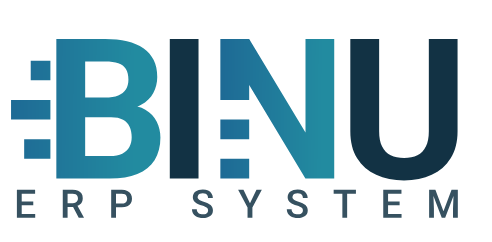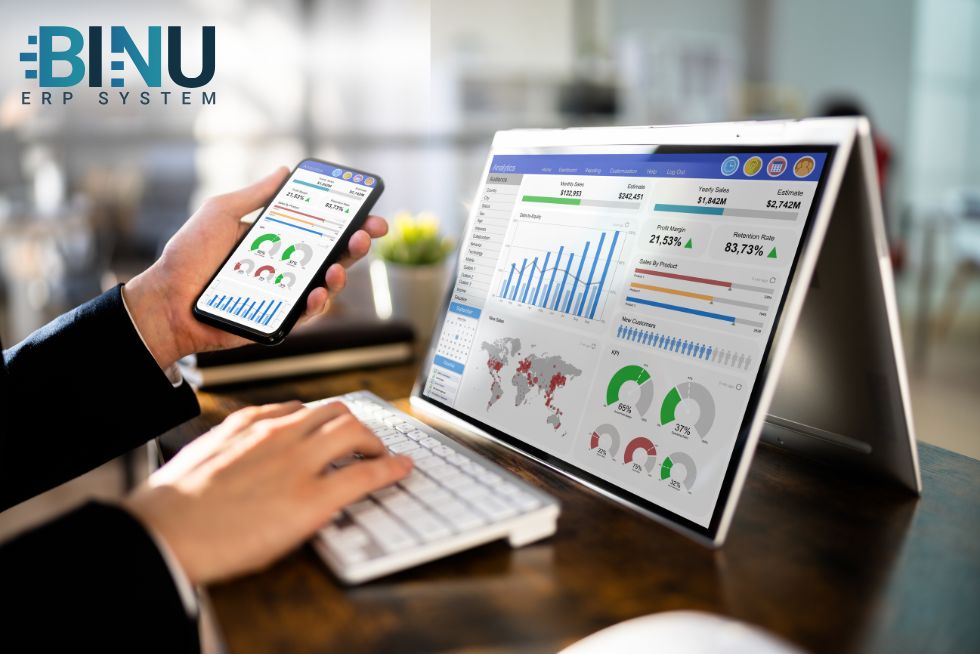Table of Contents
1. Introduction
In modern manufacturing, data is everywhere, from invoices and procurement orders to machine usage and worker schedules. Yet, without a connected ERP system, much of this data remains unused or siloed in spreadsheets and disconnected tools.
Earlier, we explained Why Disconnected Systems Kill Productivity in Modern Manufacturing and how integration drives efficiency. We also covered Full Operational Visibility Across ERP as a best practice for managing connected operations.
Now, the next big step is understanding why real, accurate, and updated data is the true driver of ERP value—especially when it comes to advanced reporting, cost control, and smart decision-making.
2. Why Data Quality is the Heart of ERP
An ERP without accurate data is like a factory without electricity, it simply doesn’t work at full potential. Data in ERP provides the single source of truth every department needs:
- Sales needs accurate product, price, and stock data.
- Production depends on real inventory data.
- Procurement depends on supplier and cost data.
- Planning depends on machine and worker availability data.
- Management depends on reliable reports.
When data is complete and real-time, ERP shifts from being just an IT tool into a strategic control hub for the entire company.
MIT Sloan research shows that, nearly 70% of manufacturing delays and cost overruns are linked to poor system integration and unreliable data.
3. The Risks of Poor or Disconnected Data
Disconnected or low-quality data isn’t just inconvenient—it’s a hidden cost. Risks include:
- Production stoppages when missing materials aren’t flagged in time.
- Duplicate orders when sales and procurement lack shared visibility.
- Inaccurate reporting, leading to poor strategic decisions.
- Cost overruns caused by repeated errors or last-minute fixes.
Research shows manual data errors cost manufacturers up to $300 per incident, and companies with poor system integration face higher risks of delays and revenue losses (Harvard Business Review, Deloitte).
By contrast, a connected ERP system ensures every process uses and updates the same live data. Instead of each department working in isolation, sales, procurement, production, QC, warehouse, and finance all operate in one ecosystem.
For manufacturers, this means:
- No more duplicate entries.
- No more waiting for updates.
- No more blind spots.
With integration, data becomes a continuous flow, powering advanced reporting, predictive planning, and smarter decision-making.
4. Real-Time Data and Advanced Reporting in ERP
Modern ERP doesn’t just collect data—it transforms it into actionable insights. Examples of reports include:
- Warehouse balances → Real-time stock levels and locator tracking.
- Sales reports → What was sold, linked to orders, invoices, and customers.
- Procurement reports → Purchases connected to suppliers, costs, and accounting.
- Cost reports → Tracking of working hours, machine time, and materials per assembly.
- Production progress → Live Gantt plans showing dependencies, capacities, and completion rates.
When all processes are connected, reports are generated automatically—always based on the latest data.
5. Practical Examples of Data in Action
Example 1: Warehouse, Sales & Procurement Reporting
In a connected ERP, all in/out flows, warehouse balances, sales, and procurement are linked. This allows companies to:
- Check real-time stock levels, and locations across warehouses.
- Track every incoming delivery (supplier, order ID, QC result).
- Trace every outgoing shipment (customer, sales order, invoice).
- Generate in/out reports showing exactly what was bought, sold, or written off—with full links to procurement or sales orders.
Because data flows seamlessly, managers can answer questions like:
“What did we sell last month, from which stock, at what cost, and linked to which invoice?”
Example 2: Worker & Machine Planning
Planning isn’t just about timelines—it’s about data-driven resource allocation. With a connected ERP system, manufacturers can:
- Assign workers, and check their availability.
- Allocate machines, and track working hours.
- Manage dependencies between tasks.
- Monitor progress in real time.
This generates advanced utilization, and cost reports, showing exactly how much time workers and machines spent on each task, and how this translates into product costs.
Example 3: Binu ERP: An Example of Connected Data in Action
Many ERP systems promise integration, but Binu ERP was built for manufacturers to ensure data flows across every key process.
Here’s how it works in practice:
- Sales chain starts with a client specification and generates an offer.
- If stock is available → the warehouse delivers.
- If production is required → ERP automatically creates a production request.
- If materials are missing → the system triggers an automatic procurement request.
- Production list & plan follow BOM hierarchy, linking stock checks, and procurement.
- Procurement chain connects suppliers, costs, and delivery schedules, while QC checks every item before allocation.
- Production execution uses a Gantt-style plan with worker and machine scheduling, real-time progress tracking, and material allocation.
- Confirmations with digital signatures ensure accountability and prevent mistakes.
- Delivery chain ensures finished items pass QC, are allocated to shelves, and shipped with invoices and offers linked.
- Advanced reporting covers warehouse balances, in/out flows, invoicing, cost tracking, machine/worker utilization, outsourcing, and RMA policies.
By ensuring every step produces, and consumes live data, Binu ERP turns information into insight—and insight into competitive advantage. For more information about what processes Binu covers you can check our video: See How ERP Manages Business Processes – Manufacturing Use Case.
6. Disconnected Data vs. Connected Data in ERP
| Aspect | Disconnected Data | Connected ERP Data |
| Warehouse Visibility | Manual stock checks, errors | Real-time balances with locator tracking |
| Sales & Procurement | Separate tracking, delays | Linked chains: orders ↔ procurement ↔ invoices |
| Reporting Speed | Manual updates, slow | Instant, real-time reports |
| Cost Control | Hidden costs, limited | Full breakdown of hours, machines, materials |
| Decision-Making | Reactive | Proactive, data-driven |
| Traceability | Hard to follow | Supplier → warehouse → production → sales |
Table 1: Disconnected Data vs. Connected Data in ERP
7. Conclusion
In modern manufacturing, data is the most valuable asset. But only when it’s accurate, connected, and updated through ERP does it truly empower companies.
Disconnected tools create blind spots, errors, and costs, while a connected ERP ensures transparency, advanced reporting, and data-driven leadership.
Binu ERP demonstrates how this works in practice, showing that when every process is linked, data becomes more than numbers. It becomes the backbone of smarter, faster, and more profitable manufacturing.
8. Frequently Asked Questions (FAQ)
Q1: Why is data so important in ERP?
Because it powers reporting, planning, and decision-making. Without accurate data, ERP loses its value.
Q2: What types of reports can a connected ERP provide?
In/out flows, warehouse balances, procurement reports, sales reports, cost reports, worker and machine utilization, and more.
Q3: How does connected ERP prevent errors?
By automating data flows, integrating QC, and requiring confirmations with digital approvals.
Q4: Can ERP improve cost control?
Yes. Advanced reporting tracks hours, materials, and machine use to identify inefficiencies and hidden costs.
Q5: What makes Binu ERP different?
It was designed for manufacturing with chain-based integration, real-time data updates, and transparent reporting across all processes—without costly add-ons.
Q6: How does ERP integration improve manufacturing efficiency?
Integration ensures that sales, procurement, production, warehouse, and finance share the same live data. This eliminates duplicate work, reduces delays, and keeps the entire operation aligned.
Q7: What role does quality control (QC) play in ERP data?
QC ensures that only approved items move forward. Data from QC checks is stored in ERP, helping track reworks, write-offs, and quality history for better decision-making.
Q8: Can ERP systems handle outsourcing and RMA processes?
Yes. Connected ERP systems, such as Binu ERP, support outsourcing chains and RMA policies—ensuring full traceability even for external suppliers and product returns.
Q9: How does ERP help managers with real-time decisions?
Connected ERP provides dashboards with KPIs like inventory turnover, production progress, and cost performance, allowing executives to make proactive decisions instead of reacting to outdated reports.
Q10: Is a connected ERP system scalable for company growth?
Absolutely. With integrated processes and real-time data, ERP systems like Binu ERP can easily adapt to new product lines, additional warehouses, or international operations without losing control.

